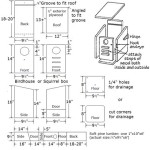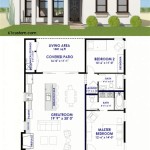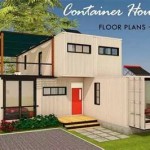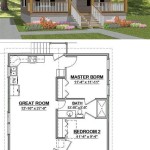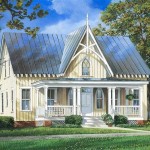Design Your Dream Home With House Designs Plans Indian Style
Indian house design plans are characterized by a harmonious blend of traditional architectural elements and modern living requirements. These designs often incorporate locally sourced materials, efficient space utilization, and features that cater to the specific climate and cultural preferences of the region. Creating a dream home using Indian style house designs requires careful planning and an understanding of the principles that underpin this unique architectural approach.
The appeal of Indian house design plans lies in their ability to create spaces that are both functional and aesthetically pleasing. They often emphasize natural light and ventilation, which are crucial in the warm Indian climate. Courtyards, verandas, and balconies are common features that blur the lines between indoor and outdoor living. Furthermore, traditional elements like jaalis (perforated screens), arches, and intricate carvings add a touch of elegance and cultural significance to the design.
Embarking on the journey of designing a home in the Indian style begins with identifying individual needs and preferences. This involves considering the size of the family, lifestyle habits, and any specific requirements, such as accessibility features or dedicated spaces for religious practices. Once these fundamental aspects are established, the design process can move towards incorporating the key elements that define Indian architectural styles.
Key Considerations When Planning Indian Style House Designs
Several important factors need careful consideration when planning house designs in the Indian style. These factors influence the overall functionality, aesthetics, and sustainability of the home. Paying attention to these considerations early in the design process helps create a dwelling that is both comfortable and authentic.
Firstly, climate responsiveness is paramount. The design should take into account the local climate, aiming to maximize natural light and ventilation while minimizing heat gain. Depending on the region, this could involve incorporating features like shaded courtyards, strategically placed windows, and thermally efficient building materials. The orientation of the house should also be considered to minimize exposure to the harsh afternoon sun.
Secondly, the use of traditional materials and construction techniques can enhance the authenticity and sustainability of the design. Locally sourced materials like brick, stone, and wood are not only environmentally friendly but also contribute to the unique character of the home. Traditional construction techniques, such as rammed earth or lime plastering, can further improve the building's thermal performance and reduce its environmental footprint.
Thirdly, incorporating elements of Vaastu Shastra, the ancient Indian science of architecture, is often considered. Vaastu Shastra principles aim to harmonize the building with its surroundings, promoting positive energy flow and well-being. While not a mandatory aspect, incorporating Vaastu principles can add a spiritual and cultural dimension to the design.
Essential Elements of Indian Style House Designs
Indian style house designs are characterized by a distinct set of architectural elements that contribute to their unique aesthetic and functionality. These elements often reflect the cultural heritage and regional variations of India, creating homes that are both beautiful and practical.
The courtyard, or "angan," is a central feature in many traditional Indian homes. It serves as a gathering space for the family, a source of natural light and ventilation, and a visual connection to the outdoors. Courtyards can be designed in various styles, ranging from simple open spaces to elaborate gardens with water features. They often incorporate seating areas and provide a tranquil environment for relaxation and social interaction.
Verandas and balconies are another common feature, providing shaded outdoor spaces for relaxation and socializing. They also serve as a buffer between the interior and exterior, reducing heat gain and providing protection from the elements. Verandas and balconies can be adorned with intricate railings, columns, and arches, adding to the architectural charm of the home.
Jaalis, or perforated screens, are used to provide privacy while allowing for natural light and ventilation. They are often made of stone, wood, or metal and feature intricate geometric or floral patterns. Jaalis are not only functional but also add a decorative element to the façade of the building.
Arches are a prominent feature in many Indian architectural styles, adding a sense of grandeur and elegance. They can be used to frame doorways and windows, create covered walkways, or define interior spaces. Arches can be designed in various shapes and sizes, ranging from simple semicircular arches to elaborate pointed arches.
Traditional Indian homes often feature sloping roofs with overhangs to protect the walls from rain and sun. The roof material can vary depending on the region, with options like clay tiles, slate, or thatch. The overhangs provide shade and help to keep the interior cool.
Intricate carvings and ornamentation are often used to adorn the walls, columns, and ceilings of Indian homes. These carvings can depict religious figures, floral motifs, or geometric patterns. They add a touch of artistry and cultural significance to the design.
Modern Interpretations of Indian Style House Designs
While traditional Indian style house designs offer a wealth of inspiration, modern interpretations often incorporate contemporary features and materials to create homes that are both functional and stylish. This blending of traditional and modern elements allows for the creation of unique and personalized living spaces.
Modern Indian style house designs often retain the key elements of traditional architecture, such as courtyards, verandas, and jaalis, but adapt them to suit contemporary lifestyles. For example, a courtyard might be smaller and more minimalist in design, while a veranda might be integrated into an open-plan living space.
The use of modern materials like concrete, steel, and glass is becoming increasingly common in Indian house designs. These materials can be used to create clean lines, open spaces, and large windows that maximize natural light. However, they are often combined with traditional materials like brick and wood to create a harmonious blend of old and new.
Sustainability is also a key consideration in modern Indian house designs. Features like solar panels, rainwater harvesting systems, and energy-efficient lighting are often incorporated to reduce the building's environmental impact. The use of locally sourced and recycled materials is also encouraged.
Open-plan living spaces are becoming increasingly popular in Indian homes. These spaces allow for greater flexibility and interaction between family members. They can also be easily adapted to suit different lifestyles and needs.
Smart home technology is also being integrated into modern Indian house designs. Features like automated lighting, security systems, and climate control can enhance comfort and convenience.
Incorporating sustainable practices into the design process is crucial for creating environmentally responsible homes. This includes using energy-efficient appliances, minimizing water consumption, and reducing waste during construction. By adopting sustainable practices, homeowners can reduce their environmental footprint and create healthier living environments.

Indian House Design 2 Popular Designs Style

30 Lakh House Design Dream Home On A Budget In India 2024

Crafting Your Dream Home A Comprehensive Guide To Inspiring Designs

Indian Modern House Plan Designs With Photos

Indian Style 3d House Elevations Kerala Home Design And Floor Plans 10k Dream Houses

Indian Modern House Plan Designs With Photos

4 Low Cost Indian Style Home Designs With Free Plan Simple Design Ideas

North Indian Style Minimalist House Exterior Design Kerala Home And Floor Plans 10k Dream Houses

55 Best 2501 3000 Square Feet House Designs

300 Best Single Floor House Designs Modern Plans
Related Posts


